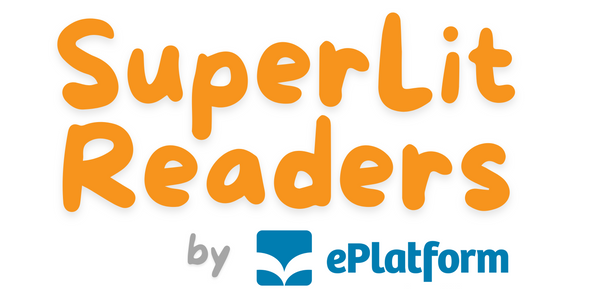What Is the Science of Reading?
A Guide for Educators & Parents
The term “Science of Reading” is everywhere. School curriculum documents reference it. Teachers are retraining around it. Parents hear about it in school newsletters. But what exactly does it mean? This blog breaks it down—no jargon, no confusion—just clear insights for anyone supporting young readers.
Table of Contents
- What Is the Science of Reading?
- Why the Science of Reading Matters
- Breaking Down the 5 Key Skills in the Science of Reading
- FAQs + Summary Points
- Final Thoughts + Next Steps

1. What Is the Science of Reading?
Understanding the Science Behind Learning to Read
The Science of Reading is a collection of evidence-based insights on how the brain learns to read. It draws from over 50 years of research in fields like cognitive psychology, neuroscience, and linguistics. Unlike speaking, reading is not a natural skill—it must be explicitly taught. That means instruction needs to be clear, direct, and intentional—students aren’t left to figure out reading strategies on their own. The Science of Reading identifies the essential skills children need and the most effective teaching methods to support them.
How the Science of Reading Works
Science of Reading-based instruction focuses on decoding—teaching students to connect letters (graphemes) with sounds (phonemes) and blend them into words. This method ensures readers can decode unfamiliar words instead of guessing from context or memorisation.
What Makes Science of Reading Different?
- It supports all learners, not just struggling readers
- It promotes structured, cumulative instruction
- It rejects guessing strategies in favour of explicit decoding
- It informs curriculum design and classroom practice
2. Why the Science of Reading Matters
Evidence That Impacts Every Classroom
The Science of Reading has transformed our understanding of early literacy. Research shows that most children—including those with learning difficulties—benefit from instruction aligned to Science of Reading principles. Despite this, many classrooms still rely on outdated methods that promote guessing, not decoding.
Why Early Instruction Matters
Without proper instruction, children often develop ineffective reading habits. The Science of Reading ensures foundational reading skills are taught early, preventing long-term reading difficulties and closing achievement gaps before they widen.
Reading Is a Social Equity Issue
When schools implement Science of Reading-aligned teaching, they give every child an equal opportunity to succeed. Students in disadvantaged communities benefit most when reading is taught systematically and explicitly.
3. Breaking Down the 5 Key Skills in the Science of Reading
What Are the 5 Key Skills in the Science of Reading?
Core to the Science of Reading is a set of five essential skills. These are often referred to as the "Big 5" or "Five Pillars of Reading." These include phonemic awareness, phonics, fluency, vocabulary, and reading comprehension. Each skill builds on the next, creating a strong foundation for lifelong literacy.
1. Phonemic Awareness
The ability to hear and manipulate individual sounds in spoken words. This is an oral skill that precedes phonics.
- Activities: Sound matching, segmenting, blending
- Why it matters: It's the strongest predictor of reading success
Phonemic Awareness and the Science of Reading
Phonemic awareness is critical because it helps children understand that spoken words are made up of individual sounds. According to the Science of Reading, this awareness is foundational for connecting speech to print—without it, students can’t effectively apply phonics or decode unfamiliar words.
2. Phonics
Understanding how letters and sounds connect to form words. Phonics is taught through a systematic approach that builds from simple to complex spelling patterns.
- Example: /m/ /a/ /t/ = "mat"
- Best practice: Use decodable books aligned to a scope and sequence
Phonics and the Science of Reading
The Science of Reading highlights phonics as the bridge between spoken language and written text. It shows that students must be explicitly taught how sounds (phonemes) map to letters (graphemes) so they can decode words independently—not rely on guesswork, memorisation, or picture cues.
3. Fluency
The ability to read with speed, accuracy, and expression. Fluent readers recognise words automatically and focus on meaning.
- Tip: Rereading familiar texts improves fluency
Fluency and the Science of Reading
Fluent reading is a result of strong decoding skills and practice. Science of Reading research shows that fluency frees up mental resources for comprehension—when students no longer have to work hard to decode each word, they can focus on understanding what they’re reading.
4. Vocabulary
Knowing the meaning of words and how to use them. Vocabulary knowledge directly supports comprehension.
- Strategy: Pre-teach key terms, especially in nonfiction
Vocabulary and the Science of Reading
The Science of Reading emphasises that decoding alone isn’t enough—students must also understand the words they read. Vocabulary development helps build background knowledge and deepens comprehension, especially as texts become more complex in later grades.
5. Reading Comprehension
Understanding what you read. This includes recalling facts, summarising, making inferences, and connecting ideas.
- Skills to teach: Questioning, visualising, retelling
Reading Comprehension and the Science of Reading
Comprehension is the end goal of all reading instruction. Science of Reading research shows that true comprehension requires a combination of decoding accuracy, fluency, vocabulary, and active thinking strategies—working together to make meaning from text.
4. FAQs + Summary Points
Is the Science of Reading the same as phonics?
No. Phonics is one component of the Science of Reading, which includes five essential areas: phonemic awareness, phonics, fluency, vocabulary, and comprehension.
Is Science of Reading only for struggling readers?
No. While it is essential for struggling readers, the Science of Reading supports all learners by providing a structured foundation from the beginning.
Are decodable readers part of the Science of Reading?
Yes—decodable readers are a core tool in Science of Reading-aligned instruction. They allow students to practise the specific phonics patterns they’ve already been taught. This reinforces decoding skills, builds reading fluency, and reduces reliance on guessing or pictures. Science of Reading research supports the use of controlled, decodable texts to ensure early reading success.
How do I know if a program is aligned to the Science of Reading?
Look for:
- A clear phonics progression
- Use of decodable readers
- Explicit instruction in phonemic awareness and blending
How does SuperLit Readers support the Science of Reading?
SuperLit Readers are fully aligned with Science of Reading principles:
- 10 levels of structured, decodable texts
- Integrated worksheets and activities for all five reading skills
- Backed by a phonics-based Scope and Sequence
5. Final Thoughts + Next Steps
The Science of Reading gives us a roadmap for teaching every child to read. It replaces guesswork with proven strategies and ensures no student is left behind.
🎯 Want a classroom-ready Science of Reading resource? Explore SuperLit Readers.
📘 See how our texts align to phonics progression: Download the Scope and Sequence.
💬 Still have questions? Visit our FAQ blog.
— Happy Reading!






